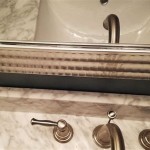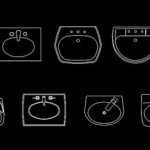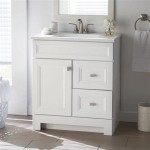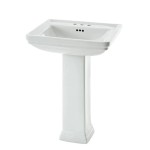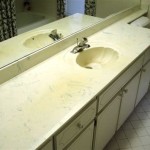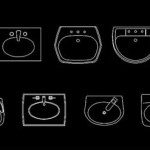Bathroom Vanity With Copper Sink: A Durable and Stylish Option
The bathroom vanity serves as a focal point in any bathroom design, providing essential storage and functionality. Choosing the right vanity requires careful consideration of various factors, including size, style, and materials. A bathroom vanity with a copper sink presents a unique and compelling option, combining durability, aesthetic appeal, and antimicrobial properties.
Copper, known for its distinct reddish-brown hue, has been used for centuries in plumbing and decorative applications. The metal's inherent resistance to corrosion and its natural ability to kill bacteria make it an ideal material for sinks. When paired with a well-chosen vanity cabinet, a copper sink can elevate the overall design of a bathroom, adding warmth, character, and a touch of rustic elegance.
The Advantages of Copper Sinks
Copper sinks offer numerous advantages over sinks made from other materials. These advantages contribute to their increasing popularity among homeowners and designers alike. Understanding these benefits is crucial in making an informed decision about bathroom fixtures.
One of the most significant advantages of copper sinks is their antimicrobial property. Copper naturally kills a wide range of bacteria, viruses, and fungi upon contact. This inherent antimicrobial action is due to the release of copper ions, which disrupt the cellular processes of microorganisms. This property makes copper sinks a hygienic choice for bathrooms, reducing the risk of bacterial contamination and promoting a healthier environment.
Durability is another key advantage. Copper is a strong and resilient metal that can withstand daily use and exposure to water and cleaning products. Unlike some other sink materials, copper does not easily chip, crack, or stain. A well-maintained copper sink can last for decades, making it a long-term investment in a bathroom's functionality and aesthetics.
The aesthetic appeal of copper sinks is undeniable. The warm, rich color of copper adds a touch of elegance and sophistication to any bathroom. Copper's natural patina, which develops over time as the metal oxidizes, enhances its visual character, creating a unique and evolving appearance. This patina can range from a bright, shiny finish to a darker, more muted tone, depending on the environment and the maintenance practices.
Furthermore, copper is a sustainable material. It is highly recyclable, and the process of recycling copper is relatively energy-efficient. Choosing a copper sink contributes to environmental sustainability by reducing the demand for newly mined materials and minimizing waste.
Selecting the Right Vanity Cabinet for a Copper Sink
The choice of vanity cabinet is just as important as the copper sink itself. The vanity cabinet must complement the sink's style, provide adequate storage, and fit the bathroom's overall design. Several factors must be considered when selecting a vanity cabinet for a copper sink.
The size of the vanity should be proportionate to the size of the bathroom. A large vanity in a small bathroom can overwhelm the space, while a small vanity in a large bathroom may look insignificant. Careful measurement of the bathroom is essential to determine the optimal vanity size.
The style of the vanity should complement the copper sink and the overall bathroom décor. A rustic-style vanity with reclaimed wood can enhance the natural look of a copper sink, while a modern vanity with clean lines can create a more contemporary feel. The choice of style depends on the homeowner's personal preferences and the desired aesthetic.
The material of the vanity cabinet should be durable and water-resistant. Solid wood, plywood with a water-resistant finish, and MDF (Medium-Density Fiberboard) are common choices for vanity cabinets. Solid wood offers the best durability and aesthetic appeal, but it can be more expensive. Plywood is a more affordable option that still provides good durability. MDF is the least expensive option, but it is more susceptible to water damage than solid wood or plywood.
Storage is another important consideration. The vanity cabinet should provide adequate storage for toiletries, towels, and other bathroom essentials. The number of drawers and shelves should be sufficient to meet the homeowner's storage needs. Consider the placement of plumbing fixtures when designing the vanity's storage layout to maximize space utilization.
The finish of the vanity cabinet should complement the copper sink and the bathroom's color scheme. A natural wood finish can enhance the warmth of the copper sink, while a painted finish can add a pop of color. The finish should also be durable and easy to clean to maintain the vanity's appearance over time.
Styles and Finishes of Copper Sinks
Copper sinks are available in a variety of styles and finishes, allowing homeowners to customize their bathroom's design. The choice of style and finish can significantly impact the overall look and feel of the bathroom.
One popular style is the hammered copper sink. Hammered copper sinks have a textured surface created by hand-hammering the metal. This texture adds visual interest and helps to conceal minor scratches and imperfections. Hammered copper sinks are often associated with rustic or traditional bathroom designs.
Another style is the smooth copper sink. Smooth copper sinks have a polished surface that is sleek and modern. These sinks are easy to clean and maintain, and they can complement a variety of bathroom styles. Smooth copper sinks are often paired with modern or contemporary vanity cabinets.
Drop-in copper sinks are designed to be installed into a pre-cut hole in the vanity countertop. These sinks are relatively easy to install and are a popular choice for homeowners who want to update their bathroom without making major renovations.
Undermount copper sinks are installed underneath the vanity countertop, creating a seamless transition between the sink and the countertop. Undermount sinks are more difficult to install than drop-in sinks, but they offer a cleaner, more modern look.
Vessel copper sinks sit on top of the vanity countertop, creating a dramatic focal point in the bathroom. Vessel sinks are available in a variety of shapes and sizes, and they can add a touch of elegance and sophistication to any bathroom. Vessel sinks require a taller faucet to accommodate their height.
The finish of a copper sink can also vary. A polished copper finish is bright and shiny, and it reflects light well. A brushed copper finish has a matte appearance, and it is less prone to fingerprints and water spots. An antique copper finish has a darker, more muted tone, and it can add a touch of vintage charm to the bathroom.
The patina of a copper sink is a natural oxidation process that occurs over time. The patina can range from a bright, shiny finish to a darker, more muted tone, depending on the environment and the maintenance practices. Some homeowners prefer to maintain the original shine of their copper sinks, while others embrace the patina and allow it to develop naturally.
Sealed copper sinks are treated with a sealant that protects the metal from oxidation and staining. Sealed copper sinks require less maintenance than unsealed copper sinks, but they may not develop the same natural patina over time.
Unsealed copper sinks are not treated with a sealant, and they will develop a natural patina over time. Unsealed copper sinks require more maintenance than sealed copper sinks, but they offer a more authentic and evolving look.

Copper Bathroom Sinks And S By Sinkology

Rustic Farmhouse Vanity Double Bathroom Diy Sink Furniture Unique

Diy Bathroom Vanity Plus Makeover 700 N Cottage

Copper Bathroom Sinks And S By Sinkology

Thompson Traders Vanities Vts Petit Rustic Bathroom Vanity Copper Sink Includes Drain Wave Plumbing Supply

19 Aged Copper Oval Bathroom Sink Vanity Sinks

48 Wood Copper Bathroom Vanity Artisan Crafted

Slipper Vessel Copper Vanity Sink Mountain Creations

Rustic Farmhouse Vanity Copper Sink 42 Off White

Hammered Copper Sink Vanity Bathroom Bowl Denmark
